




Slugs are common pests that can find their way into our homes and create a nuisance. These slimy creatures are attracted to moisture and can enter our houses through various entry points. Understanding the causes of slug infestation and taking preventive measures can help keep them out of our living spaces.
One of the main causes of slugs getting into the house is dampness. Slugs thrive in damp environments and are often found in areas with high humidity. This can include basements, crawl spaces, and bathrooms. Leaky pipes, faulty drainage systems, and even excessive condensation can create a welcoming environment for slugs to enter our homes.
Another common cause of slug infestation is the presence of food sources. Slugs are voracious eaters and will be attracted to any food left out in the open. This can include pet food, leftovers, and even fruits or vegetables that are not properly stored. Ensuring that all food sources are properly sealed or stored can help prevent slugs from finding their way into our homes.
Similarly, poorly maintained gardens can also be a cause of slug infestation. Slugs are often found in gardens, as they feed on plants and vegetation. If our gardens are not properly maintained or if there is an overabundance of vegetation, slugs can easily migrate from the garden into our homes. Regularly pruning plants, removing debris, and using slug-repelling techniques can help keep our gardens slug-free and prevent them from entering our houses.
In conclusion, understanding the causes of slug infestation and taking preventive measures can help keep our homes slug-free. By addressing issues such as dampness, food sources, and garden maintenance, we can minimize the chances of slugs finding their way into our living spaces. With proper precautions, we can enjoy a slug-free environment and maintain a clean and pest-free home.
Causes of Slugs in the House
Slugs are commonly found in gardens and outdoor areas, but sometimes they can make their way into the house. Understanding the causes of slugs in the house can help you effectively prevent their entry and minimize their presence in your home.
1. Moisture
Slugs thrive in damp and moist environments. If your house has areas with high humidity, such as a basement or a bathroom with poor ventilation, it can attract slugs. Moisture can also be caused by leaky pipes or water accumulation near the foundation of your house.
2. Cracks and Openings
Slugs are capable of squeezing through tiny openings. They can enter your house through gaps around doors and windows, cracks in the foundation, or holes in screens. Slugs can also gain access through openings in utility lines, like gas or water pipes.
3. Vegetation near the House
If you have dense vegetation or overgrown plants near your house, it can provide hiding spots and easy access for slugs. They can crawl from the garden or flowerbeds onto your house, especially during rainy weather.
4. Poor Drainage
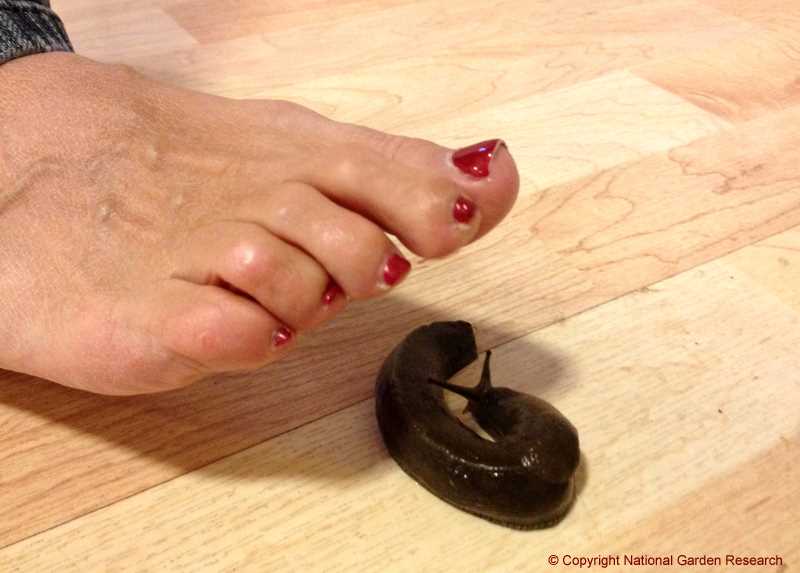
Inadequate drainage around your house can lead to water pooling, which creates favorable conditions for slugs. Areas with poor drainage, such as clogged gutters or downspouts, can contribute to increased slug activity near your house.
5. Outdoor Lighting
Outdoor lighting can attract various insects, including slugs. If you have bright lights near entrances or windows, slugs may be drawn to the light source and inadvertently enter your house in search of food or shelter.
6. Food Sources
Slugs primarily feed on decaying plant matter and fungi. If you have compost piles, mulch, or piles of leaves near your house, they can provide a food source for slugs. Additionally, if you have fruits or vegetables stored improperly or fallen from trees near your house, it can attract slugs inside.
7. Pet Food and Water
Leaving pet food and water bowls outside can attract slugs to your house. Slugs are known to feed on pet food, and the presence of water sources can create a hospitable environment for them.
By addressing these underlying causes, you can significantly reduce the likelihood of slugs entering your house. Implementing effective prevention measures, such as sealing cracks and openings, improving drainage, and reducing moisture levels, can help keep your house free from slugs.
Wet Weather
Wet weather is one of the major factors that contribute to the presence of slugs in your house. Slugs are moisture-loving creatures, and they thrive in damp and humid environments.
During periods of rainy weather, slugs tend to seek shelter and find their way into homes. They can squeeze through small cracks and gaps in windows, doors, and foundations.
Moreover, wet weather creates favorable conditions for slugs to reproduce. They lay their eggs in damp soil and moist areas, which can be found around the perimeter of houses and in gardens.
Once inside your home, slugs can cause a nuisance by leaving slime trails and feeding on plants, fabrics, and food. They can also attract other pests, such as ants or rats, that are tempted by their presence.
To prevent slugs from entering your house during wet weather, it is important to make sure there are no entry points for them to exploit. Seal any cracks or gaps in doors, windows, and walls. Additionally, keep your house well-maintained, fixing any leaks or water drainage issues that could contribute to dampness.
Creating a barrier around your house is also effective in keeping slugs away. This can be done by using gravel or coarse mulch near the foundation, as slugs dislike crawling over rough surfaces.
Furthermore, you can reduce the slug population in your garden by eliminating moist hiding spots, such as piles of leaves or boards. Regularly inspect plants and remove any dead or decaying vegetation that can serve as a food source for slugs.
If the slug problem persists despite your preventive efforts, you can use natural or chemical-based slug repellents to deter them. These can include diatomaceous earth, copper tape, or commercially available slug pellets.
By taking appropriate measures to prevent slugs during wet weather, you can maintain a slug-free environment and ensure a more pleasant living space.
Garden Vegetation
Garden vegetation can attract slugs to your property, leading to an increased chance of them finding their way into your house. Understanding the types of plants and their conditions that slugs are attracted to can help prevent slug infestations.
Moisture-Loving Plants
Slugs thrive in moist environments, so any plants that require high levels of moisture can attract them. These include:
- Ferns
- Hostas
- Hydrangeas
- Astilbes
- Ligularias
If you have these plants in your garden, it is important to monitor them closely for any signs of slug activity. Regularly inspecting the leaves and surrounding areas for slime trails or chewed foliage can help you detect the presence of slugs early on and take appropriate measures to prevent infestation.
Dense Foliage

Slugs are more likely to seek shelter in areas with dense foliage. Plants with thick leaves or ground cover can create dark and damp hiding spots for slugs. These may include:
- Hostas
- Ferns
- Heucheras
- Thyme
- Pilea
To reduce the risk of slugs finding shelter in these plants, consider thinning out dense foliage to increase airflow and sunlight penetration. This can make the environment less favorable for slugs and discourage them from staying in your garden.
Decaying Vegetation
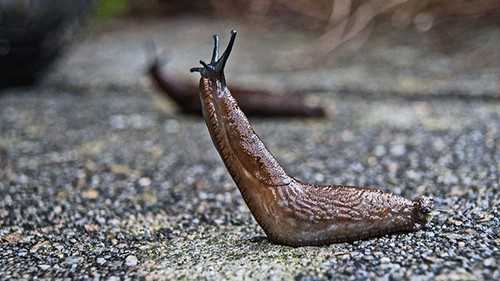
Decaying vegetation not only attracts slugs but also provides them with a food source. Slugs feed on decaying matter, so if you have any decaying plants, leaves, or mulch in your garden, it can attract these pests. Common examples of decaying vegetation include:
- Dead leaves
- Rotting fruits or vegetables
- Compost piles
- Old wood or plant debris
To prevent slugs from being drawn to decaying vegetation, regularly clean up fallen leaves and remove any rotting fruits or vegetables. Properly maintain compost piles by turning them regularly and avoiding over-watering, which can create an ideal habitat for slugs.
Barriers and Traps

In addition to managing the vegetation in your garden, you can also implement physical barriers and traps to prevent slugs from reaching your house. Some effective methods include:
- Using copper tape or barriers around pots or garden beds, as slugs are repelled by copper
- Placing beer traps in strategic locations to attract and drown slugs
- Creating barriers with sharp materials, such as crushed eggshells or diatomaceous earth, which can deter slugs
- Installing physical barriers, such as wire mesh or gravel, around your house to make it difficult for slugs to enter
Combining these methods with proper garden maintenance and regular inspection can help minimize the presence of slugs in your garden and reduce the risk of them entering your house.
Open Doors and Windows
One of the main causes of slugs entering the house is leaving doors and windows open. Slugs are attracted to dark and moist environments, and an open door or window provides easy access for them.
Why do slugs enter through open doors and windows?
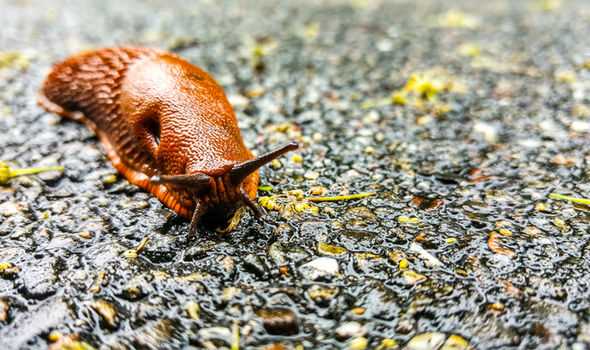
When doors or windows are left open, slugs can easily crawl in, attracted by the warmth and humidity inside the house. They are especially active during the night and on rainy days when it’s easier for them to travel and hide in the dampness.
How to prevent slugs from coming in through open doors and windows
To prevent slugs from entering your home through open doors and windows, consider taking the following measures:
- Install screens: Use window screens to keep slugs out while still allowing fresh air to flow into your home. Make sure the screens are in good condition and fit properly.
- Seal gaps: Inspect doors and windows for any gaps or cracks and seal them properly. Slugs can squeeze through tiny openings, so it’s important to seal any potential entry points.
- Remove attractants: Keep the area around doors and windows free of debris, such as leaves, mulch, or decaying organic matter. Slugs are drawn to these materials, so removing them will help discourage slugs from approaching your home.
- Close doors and windows: When not in use, make sure to close doors and windows to minimize the opportunity for slugs to enter. This is particularly important during warm and rainy seasons when slugs are most active.
By taking these preventive measures, you can greatly reduce the chances of slugs finding their way into your home through open doors and windows.
Cracks and Holes
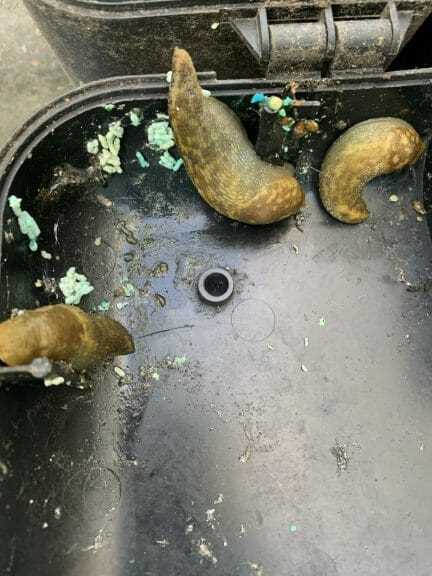
One of the most common ways that slugs can get into our homes is through cracks and holes in the building’s exterior. Slugs are small and slimy creatures, and they can squeeze through even the tiniest openings.
Cracks in the walls, foundation, or windows provide easy access for slugs to enter the house. Slugs can also enter through gaps around pipes or vents. It’s important to regularly inspect the exterior of your home and seal any cracks or holes that you find. This will not only prevent slugs from getting in but also other pests like mice or insects.
Some common areas where slugs may find entry points include:
- Cracks in the walls or foundation
- Gaps around windows or doors
- Spaces around pipes or vents
- Small openings in the roof or eaves
Once you have identified these areas, you can start addressing the issue by sealing them up. Use caulk or sealant to fill in cracks or gaps in walls or foundation. Weatherstripping can be used around windows and doors to seal any openings. Installing mesh screens over vents and chimneys can also help to prevent slugs and other pests from entering your home.
Regular maintenance and inspections can go a long way in keeping slugs out of your house. By addressing cracks and holes promptly, you can create a more secure and slug-free living environment.
Pet Food and Bird Feeders
One common cause of slugs getting into the house is pet food and bird feeders. These sources of food can attract slugs and provide them with a convenient and easily accessible meal.
Pet food left outside, especially overnight, can attract not only slugs but also other pests like ants and rodents. Slugs are particularly drawn to wet or damp pet food, so it’s important to make sure that any leftover food is stored in a secure container or brought indoors. Additionally, feeding your pets indoors can help prevent attracting slugs into your house.
Bird feeders are another common attractant for slugs. Birds tend to be messy eaters, and the remnants of birdseed on the ground can provide a buffet for slugs. Slugs are especially fond of seeds and grains, so it’s no surprise that they are often found lurking around bird feeders.
To prevent slugs from infesting your home through pet food and bird feeders, follow these tips:
- Store pet food in airtight containers.
- Remove any uneaten pet food from outside areas.
- Don’t leave pet food out overnight.
- Clean bird feeders regularly to remove any spilled seeds.
- Consider using bird feeders with built-in trays to minimize seed spillage.
- Place bird feeders away from the house to reduce the chances of slugs finding their way indoors.
By taking these simple precautions, you can greatly reduce the likelihood of attracting slugs into your house through pet food and bird feeders.
Prevention of Slugs in the House
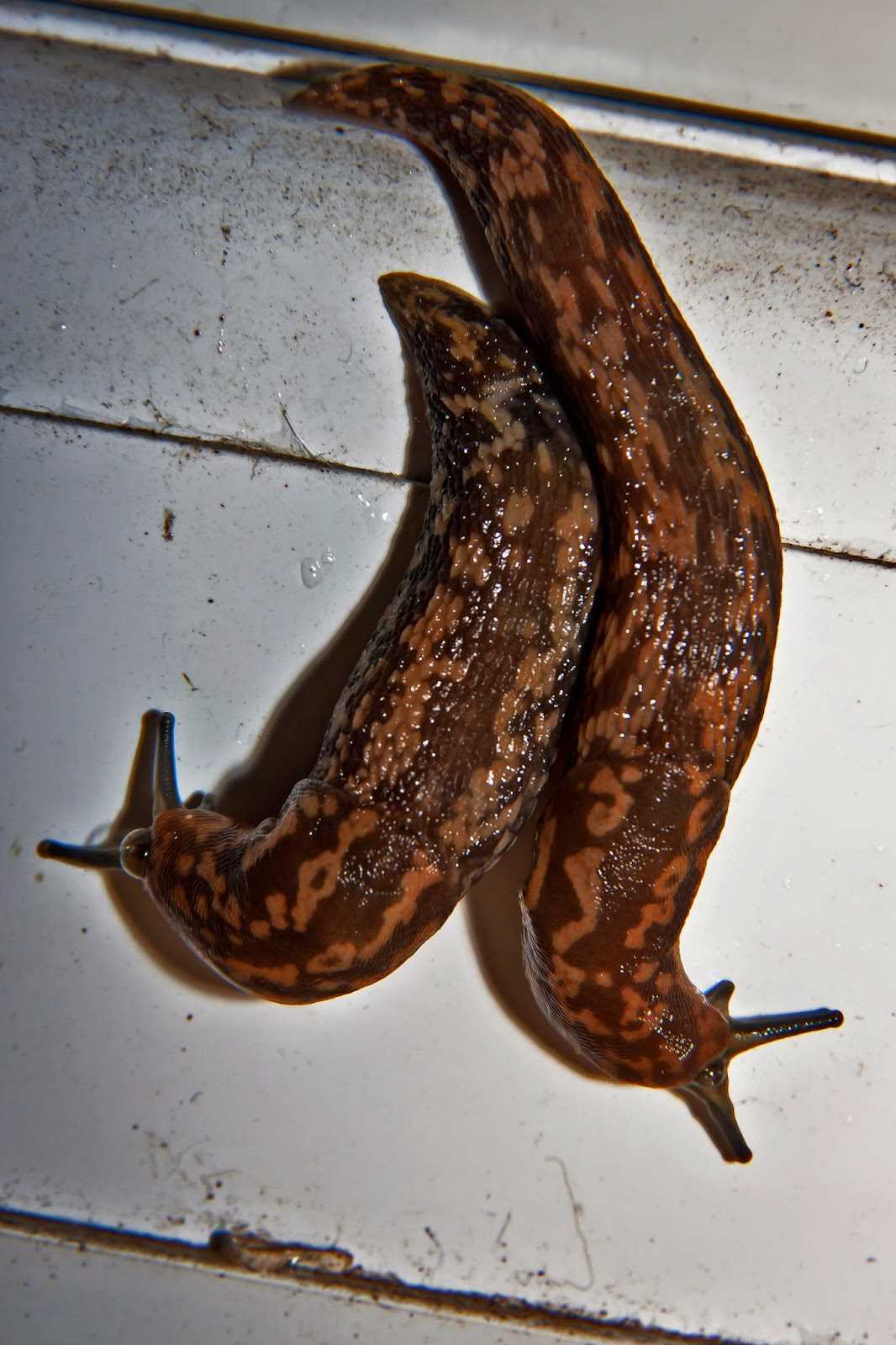
1. Seal Entry Points

One of the most effective ways to prevent slugs from entering your house is by sealing all potential entry points. Inspect your windows and doors for any gaps, cracks, or holes. Use weather stripping or caulking to seal these openings and prevent slugs from finding their way indoors.
2. Remove Moisture and Excess Moisture
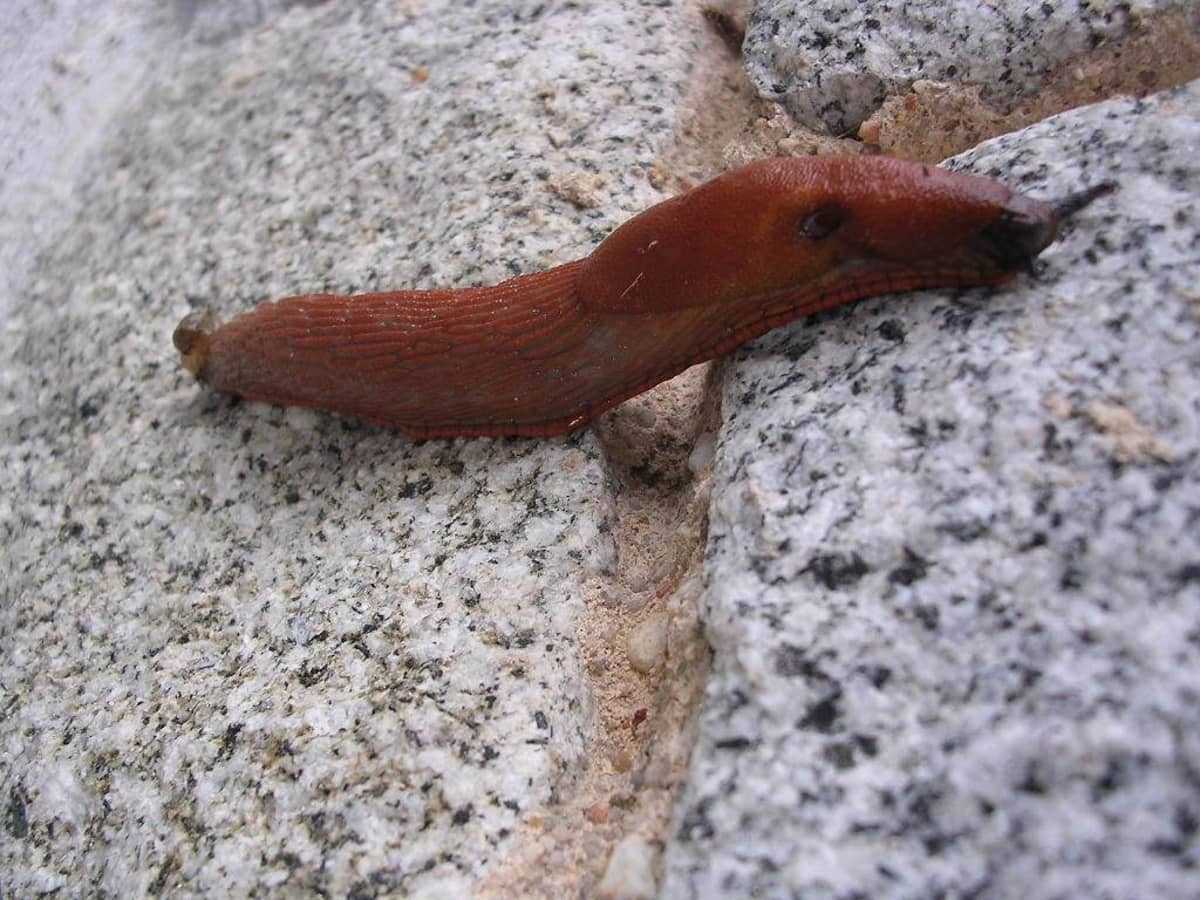
Slugs thrive in moist environments, so it’s important to eliminate any excessive moisture in and around your house. Repair leaky pipes, faucets, or any other sources of water indoors. Ensure that your gutters and downspouts are properly functioning to prevent water accumulation near the foundation of your house. Regularly clean and dry any moist areas or objects, such as mats, potted plants, and damp basements.
3. Create Barriers
Creating barriers around your house can help to deter slugs from entering. Spread a layer of coarse substances, such as crushed eggshells, diatomaceous earth, or cedar mulch, around the perimeter of your house. These coarse materials are uncomfortable for slugs to crawl on and can act as a physical deterrent.
4. Remove Attractive Food Sources
Slugs are attracted to decaying organic matter, so removing their potential food sources can help prevent them from entering your house. Regularly clean up fallen leaves, grass clippings, and other debris from your yard. Keep compost bins covered and away from the house. Store firewood away from the house and elevate it off the ground.
5. Implement Natural Predators
Natural predators of slugs, such as frogs, toads, and birds, can help keep their population in check. Encourage these predators to visit your yard by creating a welcoming environment. Provide water sources, nesting materials, and shelter for birds. Create habitats for frogs and toads with suitable vegetation and water features.
6. Use Slug Traps or Barriers
Setting up slug traps or barriers can be an effective way to catch and remove slugs before they enter your house. Slug traps can be made using shallow containers filled with beer or a mixture of water and yeast. Slugs are attracted to the liquid and will drown in it. Alternatively, you can place copper barriers around vulnerable areas, as slugs dislike crawling over copper.
7. Regularly Inspect and Maintain
Regularly inspect the exterior of your house for signs of slug activity or any entry points they may be utilizing. Stay vigilant and address any issues promptly to prevent a full-scale infestation. Ensure that your yard is well-maintained, with trimmed vegetation and clear pathways, to discourage slugs from making their way to your house.
By following these preventive measures, you can greatly reduce the risk of slugs getting into your house and causing damage or inconvenience.
FAQ
Why are slugs getting into my house?
Slugs are getting into your house for various reasons. They are attracted to moisture and darkness, so they may be entering your home in search of a wet environment. Additionally, they often find their way inside through small openings, such as cracks in doors or windows, gaps in the foundation, or vents.
How do slugs find their way inside the house?
Slugs have the ability to squeeze through very tiny openings due to their flexible body structure. They can find their way inside through cracks in doors or windows, gaps in the foundation, or even through vents. So, it’s important to seal any potential entry points in your home to prevent them from getting inside.
Can a slug infestation in the garden lead to slugs getting inside the house?
Yes, a slug infestation in the garden can increase the chances of slugs finding their way inside the house. If there is a large population of slugs in your garden, they may be attracted to any nearby moisture or food sources, which could include your home. It’s important to take measures to control slug populations in your garden to minimize the risk.
Are there any preventive measures to keep slugs out of the house?
Yes, there are several preventive measures you can take to keep slugs out of your house. Start by inspecting your home for any potential entry points and sealing them off. This includes fixing cracks in doors or windows, sealing gaps in the foundation, and installing screens on vents. Additionally, you can create barriers around your home using materials such as copper tape or diatomaceous earth, as slugs dislike these substances. Maintaining a dry environment and removing any potential food sources can also help deter slugs from entering your home.















